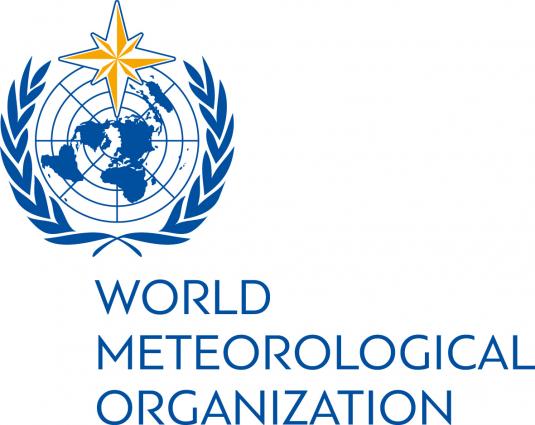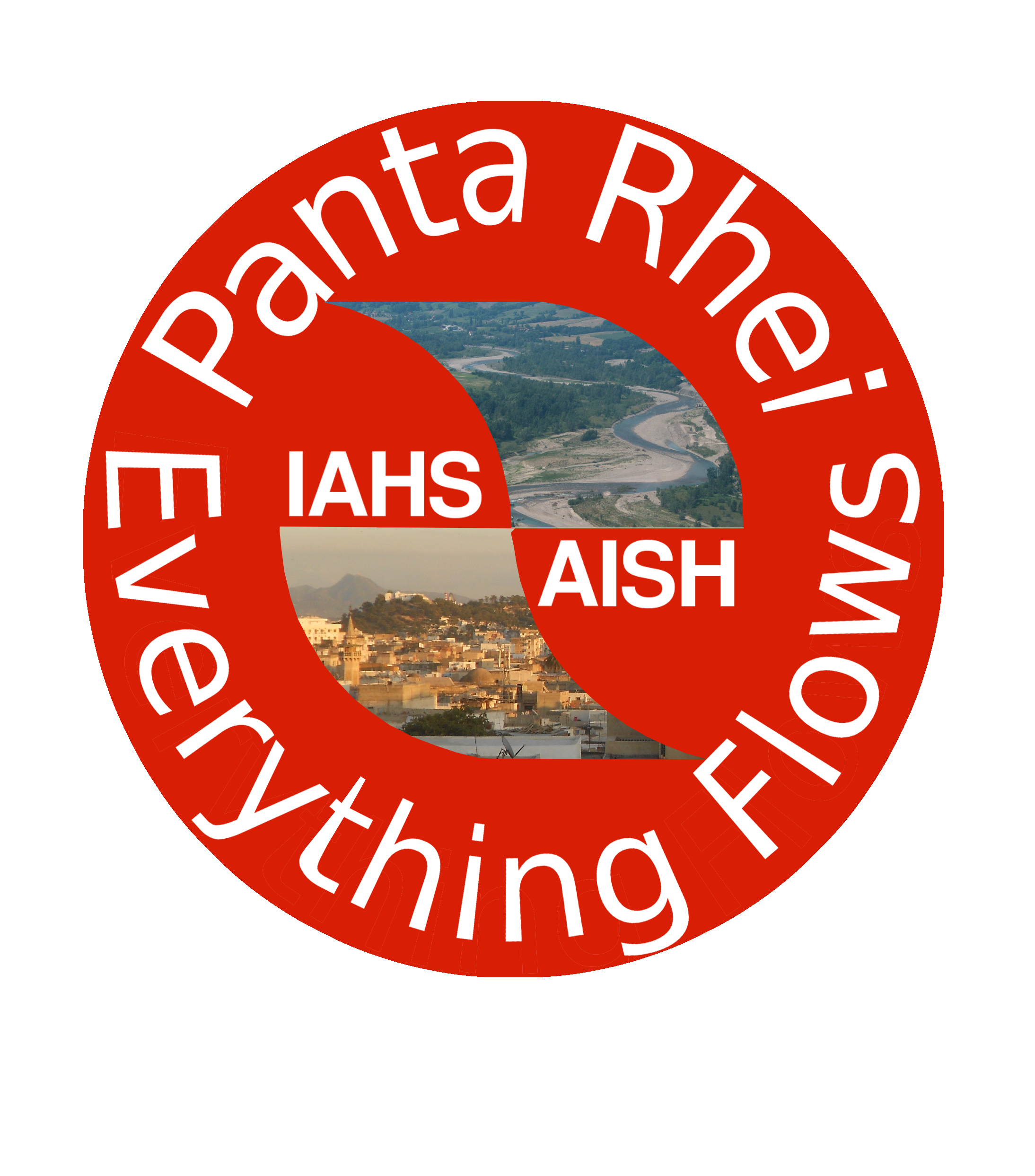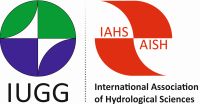IAHS News
International Hydrology Prize – Call for nominations before 31st December 2017
The International Hydrology Prize is awarded annually by IAHS, with UNESCO and WMO, to two people who have made an outstanding contribution to hydrological science. More information, including previous awards, is available at http://iahs.info/About-IAHS/Competition--Events/International-Hydrology-Prize.do.
Nominations for the Prize are made by National Committees to IAHS, National Committees to the UNESCO-IHP or National Hydrological Advisors to the WMO, and forwarded to the Secretary General of IAHS for consideration by the Nomination Committee. The Committee consists of the President and a Vice-President of IAHS and representatives of UNESCO and WMO.
Two medals are awarded under the International Hydrology Prize: the Dooge medal and the Volker medal. Both medals are intended to distinguish outstanding achievements by hydrological scientists but with a different focus. The Dooge medal is aimed at fundamental contributions to the science of hydrology, whereas the Volker medal is aimed at outstanding applications of hydrological science for the benefit of society at large.
The following applies to both the Dooge and Volker medals
- The International Hydrology Prize shall be awarded to persons who have made outstanding contributions to hydrology such as confers on the candidate universal recognition of his or her international stature.
- The contribution should have an identifiable international dimension extending beyond both the country of normal work and the specific field of interest of the candidate.
- The medals may be awarded to hydrologists of long international standing or to younger but active hydrologists who exhibit qualities of international leadership in the science or practice of hydrology.
- An active involvement in the work of IAHS and other international organizations in the field of hydrology should be counted as an advantage.
Specific considerations for the Dooge medal
- The Dooge medal is particularly intended for hydrologists who have demonstrated scientific excellence, and have made fundamental contributions to the science of hydrology as evidenced by publications in the international scientific literature and other evidence of high standard.
- Preference should be given to candidates who have recently exhibited outstanding international leadership in the science of hydrology.
Specific considerations for the Volker medal
- The Volker medal is dedicated for hydrologists who have applied their research and hydrological expertise to the benefit of society, addressing issues of public interest and development.
- Applications of hydrology to the benefit of developing countries would count as an advantage.
- Preference should be given to candidates who have contributed through both scientific and practical work, and who have made outstanding contributions to the Hydrology community as demonstrated by active involvement in the work of IAHS or other international hydrological associations.
Nomination format and procedure
Nominations should be received by the Secretary General of IAHS no later than 31 December 2017 – Christophe Cudennec at [email protected] – and consist of:
- a (max. 2, pages A4 format) nomination letter signed by a National Representative to IAHS, the President of a national committee of UNESCO-IHP, or a National Hydrological Advisor to the WMO, with one sentence citation (max. 200 characters), and stating why the nominee is the most qualified person to receive the Volker or Dooge medal, paying attention to the medal's dedication specified above;
- the nominee’s CV (max. 3 pages, A4 format) with an emphasis on the contribution to hydrological science and international scientific cooperation, providing clear information on the main criteria used for the evaluation and the specific considerations mentioned above.
- a list of the major scientific publications (max. 2 pages, A4 format).
Nominations are expected from the world diversity, and equally for female and male candidates.
Evaluation criteria
a) Outstanding contributions to hydrology evidenced by universal recognition of his or her international stature.
b) Identifiable contributions with international dimensions extending beyond both the country of normal work and the specific field of interest of the candidate.
c) For senior candidates prove of Hydrologists activities of long international standing, or for younger candidates, prove of being active hydrologists with qualities of international leadership in the science or practice of hydrology.
d) Active involvement in the work of IAHS and other international organizations in the field of hydrology is counted as an advantage.
e) Application of the hydrological research performed and the use of his/her expertise to the benefit of society and addressing issues of public interest and development.
f) Applications of hydrology to the benefit of developing countries counts as an advantage.
Abstract deadline for 'Innovation in Hydrometry - from ideas to operation'
This is a friendly reminder that the deadline to submit abstracts to the Joint MOXXI-WMO meeting "Innovation in Hydrometry - From Ideas to Operation" is November 15th.
The meeting will be held in Geneva at WMO headquarters on December 4th and 5th. There is NO registration fee to participate in the conference.
Further details on how to get there and accommodation are available on the dedicated page.
Please feel free to forward this to colleagues and friends.
See you soon,
Flavia Tauro
Chair, MOXXI, International Association of Hydrological Sciences


More papers now free to view in the HSJ Panta Rhei Virtual Series
 Two new opinion papers have been added to the Panta Rhei Virtual Series in Hydrological Sciences Journal bringing the number of papers to eight. All papers in the series are currently free to view online.
Two new opinion papers have been added to the Panta Rhei Virtual Series in Hydrological Sciences Journal bringing the number of papers to eight. All papers in the series are currently free to view online.
Westerberg, I.K., Di Baldassarre, G., Beven, K.J., Coxon, G. and Krueger, T. 2017. Perceptual models of uncertainty for socio-hydrological systems: a flood risk change example. Hydrological Sciences Journal, 62 (11), 1705-1713. doi:10.1080/02626667.2017.1356926
Liu, J., Yang, H., Cudennec, C., Gain, A.K., Hoff, H., Lawford, R., Qi, J., de Strasser, L., Yillia, P.T., and Zheng, C. 2017. Challenges in operationalizing the water–energy–food nexus. Hydrological Sciences Journal, 62 (11), 1714-1720. doi:10.1080/02626667.2017.1353695
Kreibich, H., et al., 2017. Scientific debate of Panta Rhei research – how to advance our knowledge of changes in hydrology and society? Hydrological Sciences Journal, 62 (3), 331-333. doi: 10.1080/02626667.2016.1209929
Blume, T., van Meerveld, I., and Weiler, M., 2016. The role of experimental work in hydrological science – insights from a community survey. Hydrological Sciences Journal, 62 (3), 334-337. doi:10.1080/02626667.2016.1230675
Srinivasan, V., et al., 2016. Prediction in a socio-hydrological world. Hydrological Sciences Journal, 62 (3), 338-345. doi:10.1080/ 02626667.2016.1253844
Ceola, S., et al., 2016. Adaptation of water resources systems to changing society and environment: a statement by the International Association of Hydrological Sciences. Hydrological Sciences Journal, 61 (16), 2803-2817. doi:10.1080/02626667.2016.1230674
McMillan, H., et al., 2016. Panta Rhei 2013-2015: global perspectives on hydrology, society and change. Hydrological Sciences Journal, 61 (7), 1174–1191. doi:10.1080/02626667.2016.1159308
Mount, N.J., et al., 2016. Data-driven modelling approaches for socio-hydrology: opportunities and challenges within the Panta Rhei science plan. Hydrological Sciences Journal, 61 (7), 1192–1208. doi:10.1080/02626667.2016.1159683
The deadline for discussion of Blume et al. and Srinivasan et al. has expired; discussions on Westerberg et al. and Liu et al. should be submitted to HSJ no later than end March 2018.
More information on the work if the Panta Rhei Working Group can be found on here
IUGG Publications: October e-journal
This informal newsletter is intended to keep IUGG Member National Committees informed about the activities of the IUGG Associations, and actions of the IUGG Secretariat. E-journals from the two most recent years are available in the news section of the IAHS website (http://iahs.info/News/IUGG-Newsletters.do ). Past issues are posted on the IUGG website (http://www.iugg.org/publications/ejournals/ ).
If you would like to subscribe for the monthly E-Journal, please contact the IUGG Secretariat
8th International Water Resources Management Conference update

Beijing IAHS - 13-15 June 2018
Innovative Water Resources Management under Changing Environment - Understanding Interactions and Making Balance between Humankind and Nature
Dear friends and colleagues,
For the second time the International Water Resources Management conference of IAHS will take place in the P.R. of China. We are very pleased that Professor Zongxue Xu, a vice-president of our commission, from the College of Water Sciences of the Beijing Normal University will be our host between the 13th and 15th June 2018.
The main topics of the conference are water management issues with regard to the sustainability of the environment:
- Ecological baseflow /Environmental flow to maintain the health of rivers and lakes
- Water needs for a healthy society
- Interactions between water resources and ecosystem
The program contains also the classical problems of water management:
- Assessment of available water resources at regional and basin scales
- Socio-hydrology as the basis of water resources management
- Water resources allocation and management models
- Impact of climate change and human activities on water resources
- Risk analysis for water resources systems, and
- Spatiotemporal distribution of water resources availability
In this way, the program is wide spreaded and offers many opportunities to present and discuss new scientific results and their practical applications. You are cordially invited to take part in this meeting and to submit an abstract: http://iwrm2018.bnu.edu.cn/
Please note that the deadline for abstract submissions has been extended until September 30th 2017!
I hope to meet you in Beijing!
Sincerely
Andreas Schumann
President of ICWRS
IAHS Measurements and Observations in the XXI Century (MOXXI) and WMO HydroHub joint meeting 2017
Innovation in Hydrometry – from ideas to operation


The workshop will be held in Geneva at WMO headquarters on December 4th and 5th 2017.
Sensing the hydrological cycle is key to understand natural processes. However, the monitoring systems currently operated by National Hydrological Services are very expensive to install and maintain. Too expensive for some applications, such as capacity development efforts in low-income countries. Limited budgets in developing countries but also shrinking budgets in developed countries put pressure on manufacturers and customers of hydrometry equipment to find more cost-effective solutions. MOXXI and HydroHub jointly address the need for increased data quality, spatial/temporal resolution and availability of hydrological observations by resorting to innovation and multidisciplinary.
Further information is available on the IAHS website at http://iahs.info/Commissions--W-Groups/Working-Groups/MOXXI/Information/MOXXI-2017.do
4th IAHR-WMO-IAHS Training Course on Stream gauging
Three days will be dedicated to Hydrometry basics, field and classroom exercises and recent advances (technology and uncertainty analysis), by internationally recognized lecturers. The audience will be students and professional field hydrologists. The three first courses were held in Brescia (Italy, 2011), Andong (Korea, 2013) and Hanoi (Vietnam, 2014).
Schedule:
Sunday September 2nd, 2018 – Hydrometry basics
Monday September 3rd, 2018 – Field gauging exercises
Tuesday September 4th, 2018 – Modern gauging technologies and uncertainty analysis
Contact: for sponsoring the course, proposing exhibition or for any information, please contact Jérôme Le Coz .
English will be the official language of the course.
International lecturers:
Dominique Bérod, WMO, Geneva, Switzerland
Alexandre Hauet, EDF, Grenoble, France
Prof. Ichiro Fujita, Kobe University, Japan
Boosik Kang (Chair of the course), Dankook University, Korea
Dongsu Kim, Dankook University, Korea
Jérôme Le Coz (Vice-Chair of the course), Irstea, Lyon, France
Marian Muste, University of Iowa, USA
Prof. Roberto Ranzi, University of Brescia, Italy
More information is available through the course website.
8th International Water Resources Management Conference

Beijing IAHS - 13-15 June 2018
Innovative Water Resources Management under Changing Environment - Understanding Interactions and Making Balance between Humankind and Nature
The eighth in the series of IWRM conferences organized by IAHS-ICWRS will be held in Beijing (China) in the 13th-15th June 2018.
I would like to remind you that the deadline for abstract submission is 15th September 2017.
Conference themes:
- Assessment of available water resources at regional and basin scales
- Ecological baseflow /Environmental flow to maintain the health of rivers and lakes
- Spatiotemporal distribution of water resources availability
- Water needs for a healthy society
- Impact of climate change and human activities on water resources
- Water resources allocation and management models
- Interactions between water resources and ecosystem
- Socio-hydrology as the basis of water resources management
- Risk analysis for water resources systems, and
- Related issues
For further information about registration, accommodation, abstract and paper submission, conference fees and programme, please visit the conference website: http://iwrm2018.bnu.edu.cn/
I would be most grateful, if you distributed this enews among people potentially interested in the conference.
See you soon in Beijing.
Yours faithfully
Alberto Viglione
Secretary of ICWRS
18th WaterNet/WARFSA/GWP-SA Symposium
The 18th WaterNet/WARFSA/GWP-SA Symposium will be held in Swakopmund, Namibia from 25th – 27th October 2017 under the theme Integrated Water Resources Development and Management: Innovative Technological Advances for Water Security in Eastern and Southern Africa. The Namibian Ministry of Agriculture, Water and Forestry is the lead host of the 18th Symposium.
The Symposia have been held annually in the Eastern and Southern African regions for the past 17 years to promote interaction among policymakers, academics, practitioners from water and related sectors, and cooperating partners. Together, they identify regional issues, gaps and priorities that require further research and support. Great emphasis will be placed on integration of knowledge, particularly involving scholars form the natural and social sciences.
This year, the sub-themes of the symposium have been aligned to those of the SADC Research Agenda under the Regional Strategic Action Plan on the Integrated Water Resources development and Management Phase IV. It is intended that researchers identify themes under which their projects fit within the SADC Research agenda, and thereby contribute to its main objective which is:
Promoting evidence-based implementation of SADC water programmes and projects through multi- and inter-disciplinary research, and synthesis of existing and new information, which will lead to a realisation of SADC developmental goals.
For more information read the Second Call
Obituary, Professor Wayne Erskine
 It is with great sadness that we report the sudden and untimely death of Professor Wayne Erskine who passed away in Darwin in late July 2017.
It is with great sadness that we report the sudden and untimely death of Professor Wayne Erskine who passed away in Darwin in late July 2017. Wayne graduated with a Doctor of Philosophy in Fluvial Geomorphology (1987) from the University of New South Wales, Australia. He held academic positions at the University of New South Wales, University of Newcastle – Ourimbah Campus and Charles Darwin University and, also, research scientist positions with New South Wales Department of Water Resources, New South Wales State Forest, Office of the Supervising Scientist (OSS), and the Environmental Institute of the Supervising Scientist (ERISS). He had recently been appointed as the sub-editor of Geographical Research. Wayne was a keen fisherman and spoke often of his obsession for everything related to freshwater science.
Wayne was an exceptionally productive and influential fluvial geomorphologist publishing over 230 peer reviewed international and national journal manuscripts, conference papers and book chapters. He supervised 35 post graduate students. Wayne had been a strong supporter of, and contributor to, ICCE activities since the mid-1980s and will be warmly remembered for his in depth and wide readership of the scientific literature which permitted him to engage in detail with all scientists on their work, his ability to produce high quality papers for the Red Book series, his extremely engaging and word perfect presentations on diverse subjects and increasingly on work bridging pure and applied science, and his capacity to ask incisive questions at conferences backed up by his broad, but in-depth, knowledge and understanding. He had recently been discussing the possibility of hosting a future ICCE meeting with the current committee. Wayne will be greatly missed and is survived by three children - Vanessa, Aaron, Jessica and his Mother Judith.
Professor Adrian Collins, President ICCE
